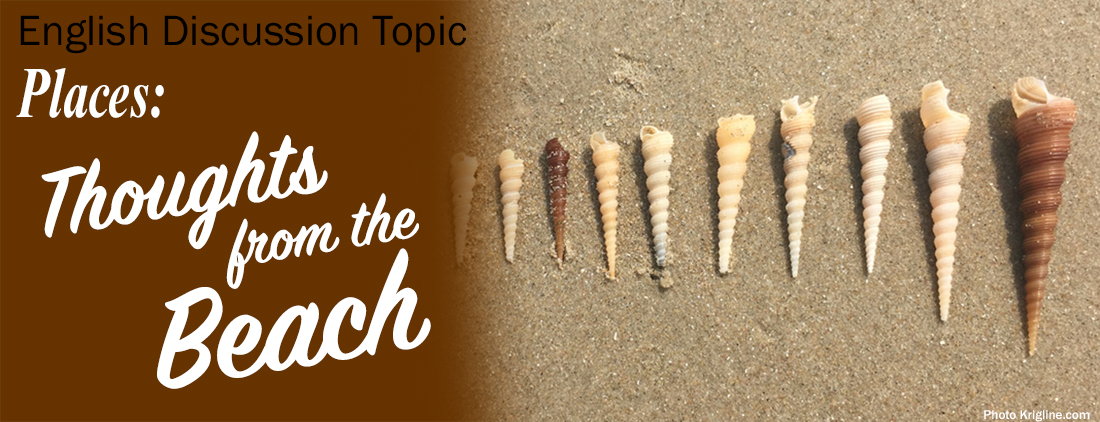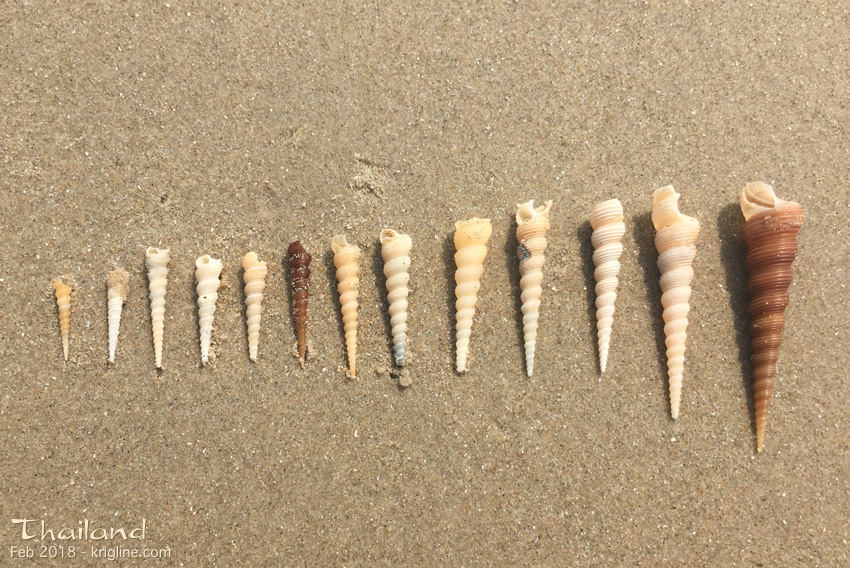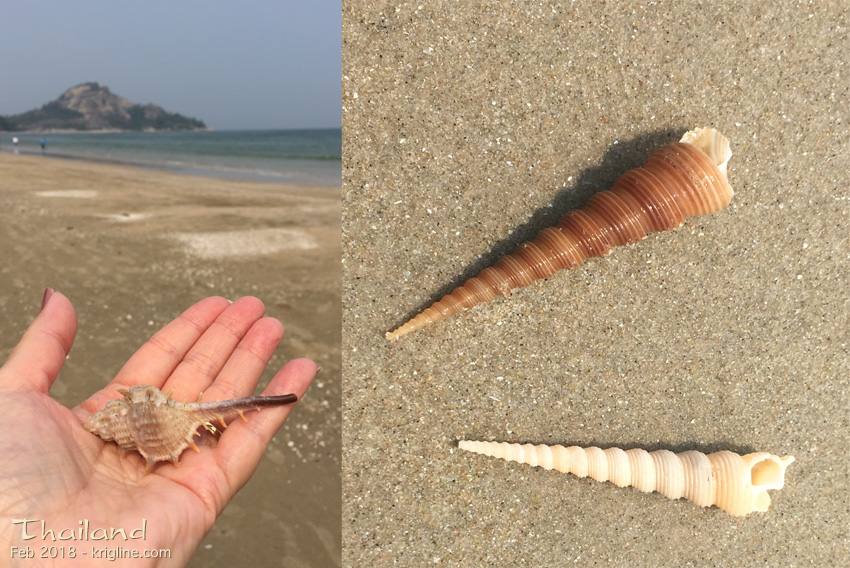Places—Thoughts from the Beach
An EFL lesson for middle-level students
Sep 2024. eflsuccess.com ⇔

Warm up: What is your favorite thing to do at the beach? (please keep your answer short!)
Vocabulary:
(*key terms) sth=something; sb=somebody [click here for common English abbreviations]
- *abundance: a large amount of sth “The beach has an abundance of sand and sea shells.”
- aesthetic: connected with beauty and the study of beauty
- chaos: a state of confusion and disorder; a situation when things happen in a confused way without organization
- to corrupt: to damage or make impure/immoral; to alter from sth’s original form “The software corrupted my data, so I had to do the experiment again.”
- *to defy (defies): to challenge in an unreasonable way; to boldly oppose or resist
- DNA: refers to countless long, microscopic chains (of nucleotides) that carry genetic information in the cells of the body “DNA information is perfectly copied before a cell divides to reproduce itself.” “The chain structure of DNA was not discovered until 100 years after Darwin published his theory of evolution in 1859.“
- *to enhance: to improve; to make sth work better “The new lab partner enhanced our team’s performance.”
- *to examine: to look at carefully and in detail
- *to honor: to treat with respect because you are proud of your association (e.g., with a parent or your country), or just because this respectful treatment is morally right
- to lavish: to generously give; to pour sth over sb “He lavished praise on his boss.”
- *to marvel: to feel great surprise or admiration at sth
- *to murder (commit a murder): to intentionally and illegally kill sb “He murdered his wife.” “Did the police officer murder the criminal, or was he just doing his job to protect others?”
- natural law: reasonable moral and ethical principles that people find in human nature, all over the world
- *spouse: husband or wife
Some Thoughts from the Beach
What do we see in the beauty of a shell?
Underlined vocabulary terms are defined above; discussion questions follow this reading.

If you walked by a line of shells, arranged on the seashore next to each other from smallest to longest, what would be your first thought?
Would you marvel that a wave had produced such a scene? Would you guess that a bird or crab made the effort to organize the shells? Instead, we would all understand immediately that a child took the time to find and arrange the shells.
A few feet away, you see similar shells beautifully arranged into a design or picture. What would you conclude?
Aesthetic arrangements—things ordered to enhance beauty—are an even higher-level skill than simple “order.” We know of nothing in the animal kingdom that intentionally decorates with color or artistic arrangement, or that has the advanced “creative skills” that even children can display on a beach. In a way, our ability to create things of beauty is a defining part of what makes us human.

Now examine the shells themselves. How and why does a tiny creature, without aesthetic appreciation, create something with such beauty, which also serves as its protective home? The answer lies in its DNA—a complex chain of information that has been passed down, unchanged, for generations. And this DNA information is itself something to marvel about, being more complex and ordered than basic computers. Where did that information come from?

If a child’s arrangement of shells clearly points to intelligence, it defies logic to believe that the shells themselves, DNA, and their complicated environment are merely the product of time and chance. A few seconds after these photos were taken, a tiny wave washed over the shells, and they were immediately disordered and partially buried in the sand. This is what time and chance do. Waves, wind, sunlight and rust corrupt, they do not bring order and life out of chaos.
Watch a treasure-hunting child on the beach. They laugh and skip, rushing toward each new shell discovered. Their simple joy and appreciation for beauty have not been unlearned by a lifetime of unanswerable questions, theories, expectations, and disappointments. They haven’t learned to keep telling themselves “nature isn’t designed, despite how it looks.” A child’s eyes simply see treasure and beauty in the sand.
It takes an adult to explain-away the wonders of natural beauty and natural law: the intelligence self-evident in creation and in simple rules such as “do to others what you would have them do to you.” But nature and the Creative Intelligence behind it keeps lavishing upon us the beauty of a beach, as well as an abundance of peace and inspiration to all who are willing to see with the eyes of a child.
Discussion:
Are there any terms you want to ask your teacher about? (As always, please do not answer any question that makes you uncomfortable.)
- If a friend offered to take you to a beach or a swimming pool, which would you choose? Why?
- What is your favorite kind of shell (pointed, fan-shape, round, big, small, what color…)? Why?
- What makes something “beautiful” to you?
- Give examples of “aesthetic arrangements” that make you, your clothes, your home, your campus (etc.) more beautiful.
- Do you think animals think of things as “beautiful” or “ugly”? Why or why not?
- Do you see “intelligence” in all three photos, or only the first two (or in none of them)? Explain.
- The article mentioned “natural law,” referring to the sense of right and wrong shared by almost all people, regardless of culture. Name some things that almost all people believe to be “wrong.”
- Are there any rules in the following list that people in your culture would object to? [If your culture would object, please explain.]
- 1. Do not secretly want to have your neighbor’s house/wife/property.
- 2. Don’t hurt your neighbor with lies.
- 3. Don’t steal.
- 4. Do not have sex with someone else’s spouse.
- 5. Do not murder.
- 6. Honor your parents.
- 7. Take time to rest (e.g., one day in seven).
- 8. Do not misuse God’s name.
- Where did the above list come from? Why would people in vastly different cultures all agree that these rules are good or right? (What does this agreement point to?)*
- What are some things that children can see or appreciate, but many adults can’t or don’t? Why?
*If you are curious, this list came from the Bible, Exodus 20. (Look there to see two more rules!) Many believe that this universal “moral” agreement points to an intelligent, moral being who created people with His own sense of morality. Indeed, the first thing the Bible teaches about God is that He creates, and created both men and women “in His image.” The Bible’s first words are: “In the beginning, God created…” (Gen 1:1)
If you have extra time:
Jesus said, “Blessed are the pure in heart, for they shall see God.” (Matt 5:8) What do you think he meant? How does one get a “pure” heart? How or where will these “pure-hearted” people see God?
Resources posted at EFLsuccess.com do not imply any consent from or relationship with any movie companies, locations, web-hosts, universities, on-line services, publishers, producers, etc. For a list of dictionaries I consult when creating my definitions, see my LEARNER LINKS page.
Original materials on EFLsuccess.com ©Michael Krigline, some rights reserved. Our resources were created for our students under the understanding of “fair use” for educational resources. As far as we are concerned, website visitors are allowed to print/copy these materials for personal or classroom use. For details, see our Website Standards and Use Policy. We also encourage you to visit Michael’s inspirational website: wp.krigline.com.
~ ~ ~ ~ ~ ~ advertisement ~ ~ ~ ~ ~ ~
